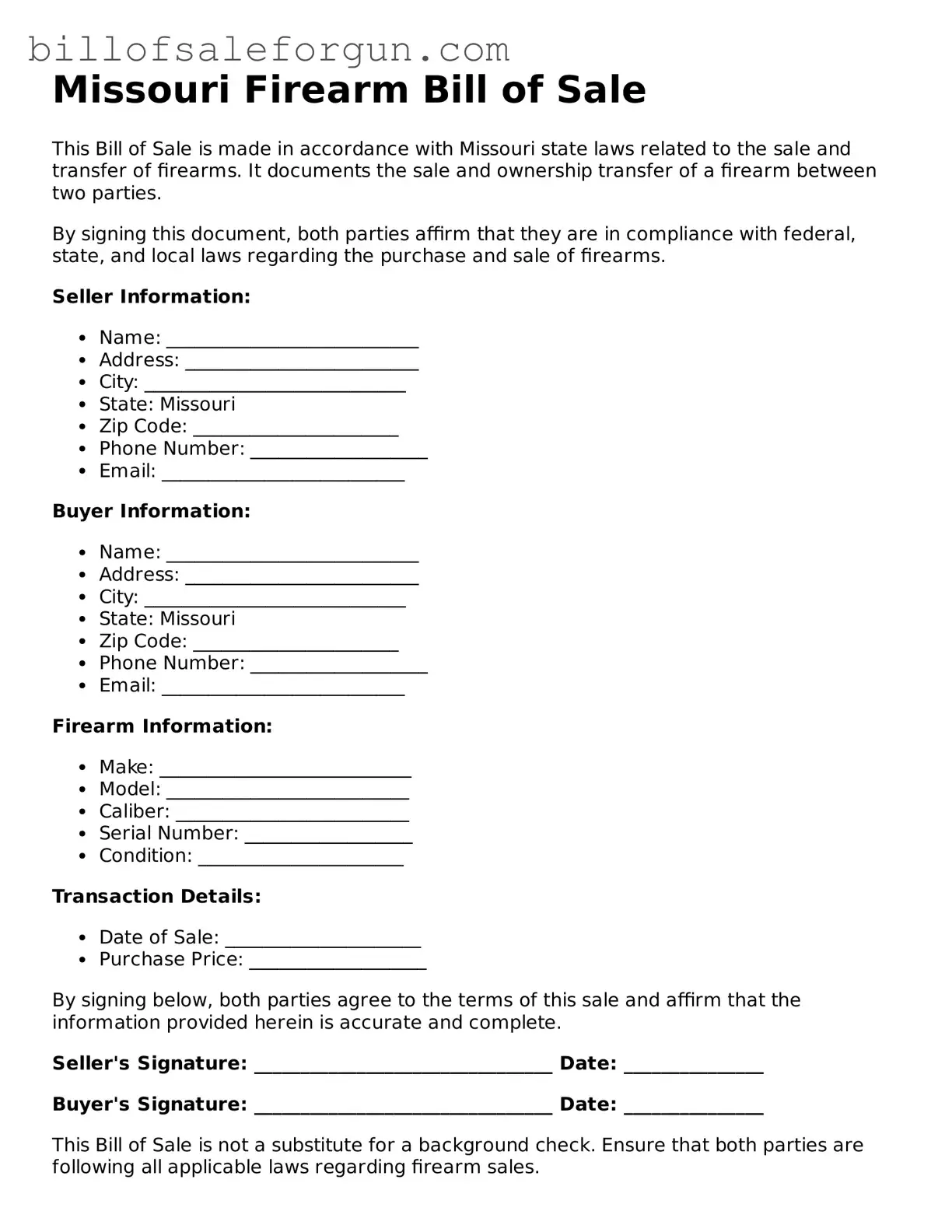Similar forms
The Missouri Firearm Bill of Sale form shares similarities with the general Bill of Sale. Both documents serve as proof of a transaction between a buyer and a seller. They outline the details of the item being sold, including its description and the sale price. While a Bill of Sale can pertain to various items, including vehicles and personal property, the firearm-specific version includes additional information pertinent to firearms, such as serial numbers and the buyer's eligibility to own a firearm.
Another document that resembles the Missouri Firearm Bill of Sale is the Vehicle Bill of Sale. Like the firearm version, this document provides a record of the transaction between two parties. It includes details such as the vehicle's make, model, and VIN (Vehicle Identification Number). Both forms protect the interests of the buyer and seller by documenting the transfer of ownership, ensuring that both parties have a clear understanding of the transaction.
Understanding the nuances of various sale documents is crucial for ensuring smooth transactions. Similar to the Trailer Bill of Sale form, the Missouri Firearm Bill of Sale serves as a legal tool, providing documentation of ownership transfer. For those looking to familiarize themselves further with such forms, resources like https://topformsonline.com/trailer-bill-of-sale/ can offer additional insights into creating a seamless ownership transition.
The Lease Agreement is another document that shares common ground with the Firearm Bill of Sale. While it focuses on rental properties, it also outlines terms of agreement between two parties. Both documents require the identification of the parties involved, the description of the item or property, and the terms of the transaction. Each serves to protect the rights of the involved parties, ensuring clarity and legal compliance in the exchange.
Similarly, the Personal Property Bill of Sale functions like the Firearm Bill of Sale. This document is used for the sale of personal items, providing a written record of the transaction. It includes details such as the item description and sale price, mirroring the structure of the firearm-specific form. Both documents aim to formalize the transfer of ownership and can be used in legal contexts to prove that a sale occurred.
The Gift Receipt also shares characteristics with the Missouri Firearm Bill of Sale. Although it is not a sale, it documents the transfer of ownership. This document includes details about the item being gifted and the parties involved. Both forms serve to provide proof of the transaction, ensuring that there is a record of the exchange, which can be important for future reference or legal purposes.
The Affidavit of Ownership is another document that has parallels with the Firearm Bill of Sale. This affidavit serves as a sworn statement declaring ownership of an item, similar to how the Bill of Sale confirms the transfer of ownership. Both documents may be used to establish legal rights over an item, providing necessary details about the item and the individuals involved in the transaction.
Another comparable document is the Warranty Deed, which transfers ownership of real property. While it focuses on real estate rather than firearms, both documents require the identification of the parties and a clear description of the item being transferred. Each serves to formalize a transfer of ownership and protect the interests of both parties involved.
Lastly, the Receipt for Payment is akin to the Firearm Bill of Sale. This document acknowledges the receipt of payment for goods or services. While it may not specify the transfer of ownership in the same way, it still provides evidence of a transaction. Both documents are important for record-keeping and can be used to resolve disputes regarding the sale or transfer of items.
